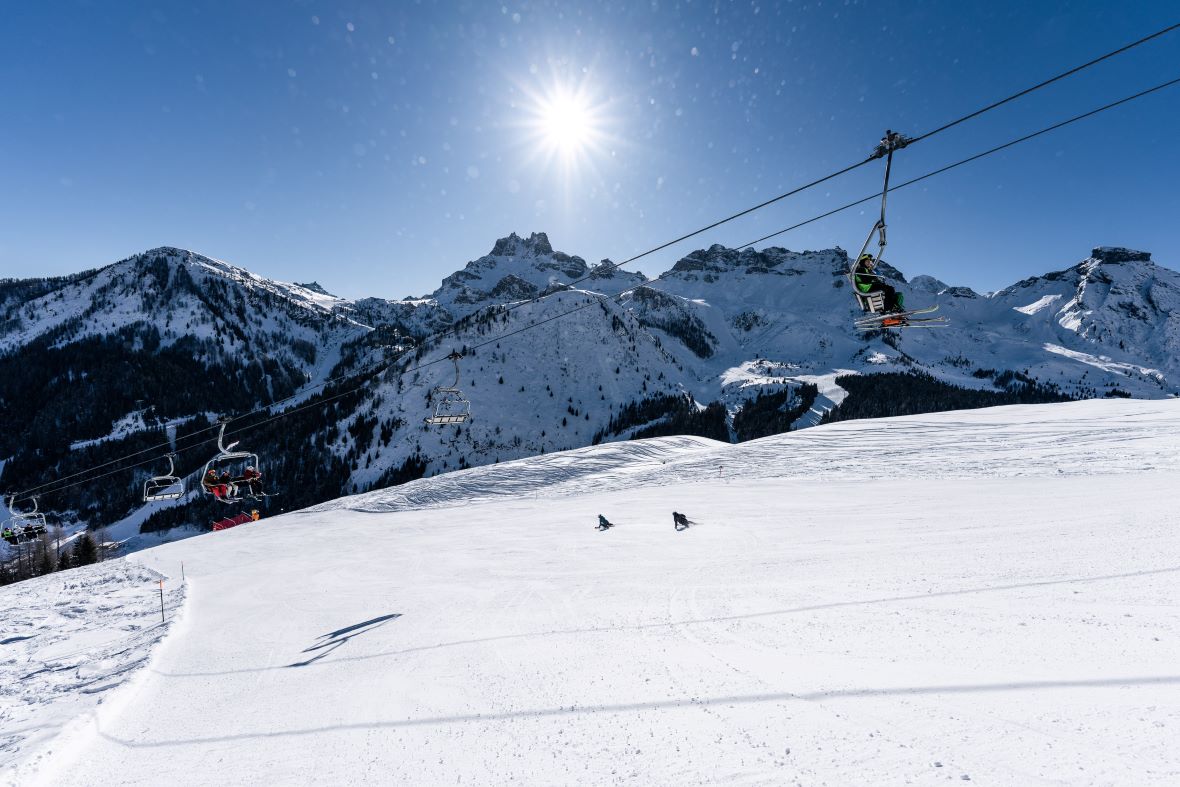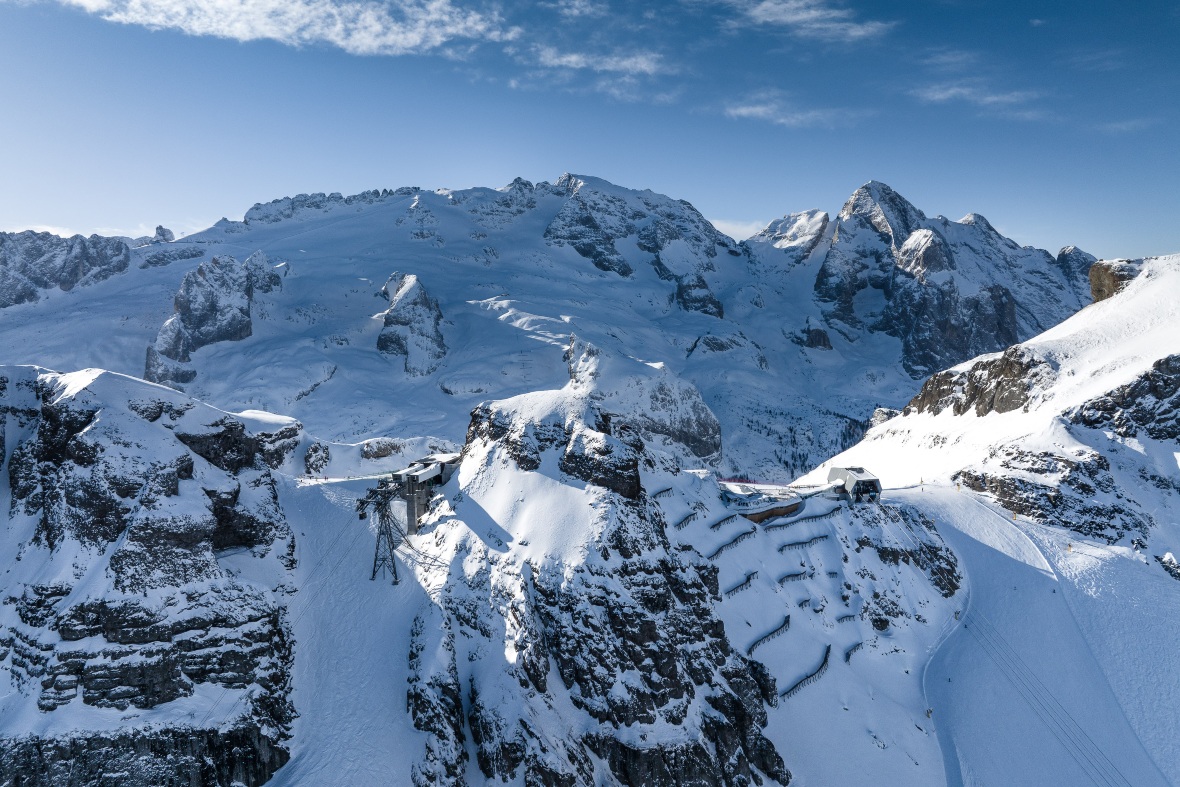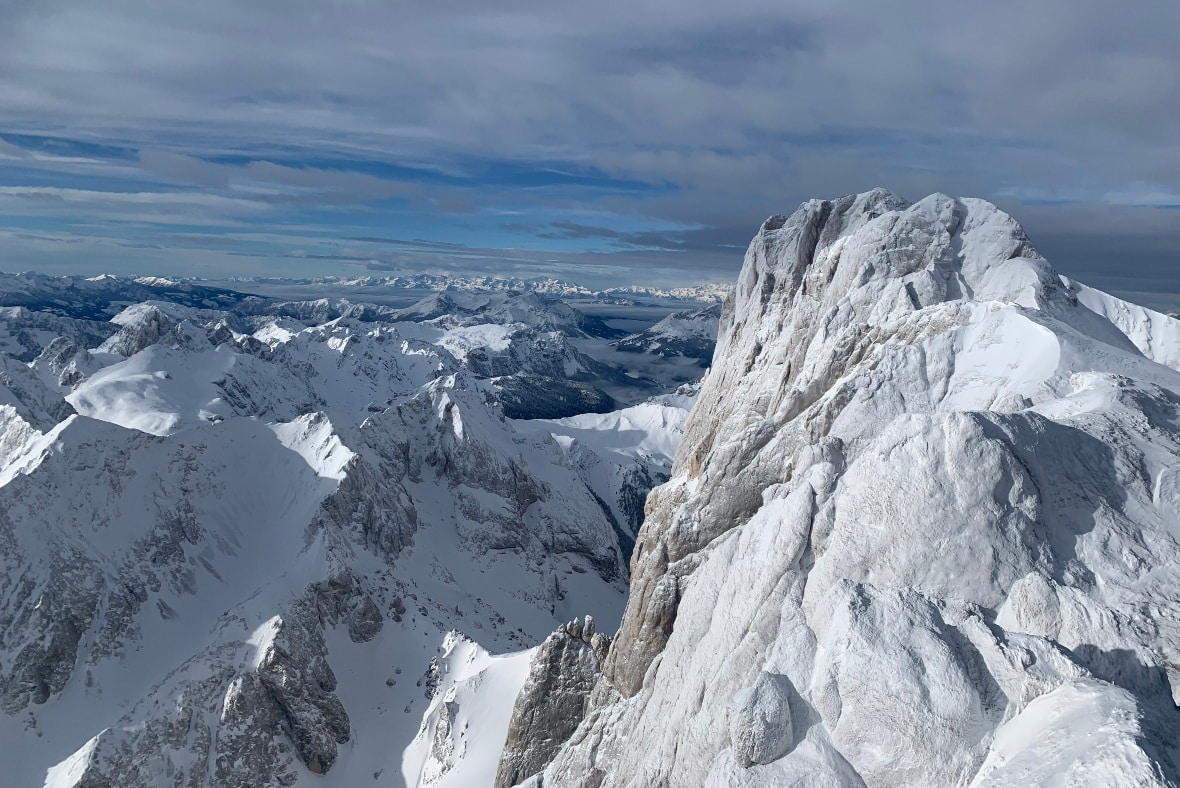Ski Lifts in Arabba-Marmolada
Arabba has a higher percentage of modern fast lifts than the other Sellaronda ski resorts. Usually the only long queues are for the Marmolada cable car, but if you stay in Arabba you can get ahead of the crowds by arriving early. Most skiers should get the Dolomiti Superski pass rather than just the Arabba-Marmolada local lift pass.

Arabba has a lot of chair lifts and very few drag lifts © Matteo Agreiter Photography – Arabba Fodom Turismo
Lift System
For a small Italian ski resort, Arabba has a lot of fast, efficient ski lifts.
For instance, the main Porta Vescovo base station houses three lifts providing three different ways to get to the upper slopes: the Porta Vescovo cable car; the two-stage gondola (Pescoi then Forcella Europa); or a one-stage gondola (Portados) which connects with the Carpazza high-speed chairlift, which gets you high enough to reach the Sellaronda orange route and the famous Fodoma and Sourasass black pistes.

Forcella Europa Gondola and Porta Vescovo Cable Car stations at the top of Porta Vescova © Matteo Agreiter Photography – Arabba Fodom Turismo
Having gondolas which stop at mid-mountain as well as the bottom-to-top cable car is a real advantage in bad weather, enabling skiers to stay below the tree line when visibility is poor.
The two-way Arabba Fly chair lift very efficiently links the north facing slopes of Porta Vescovo with the south facing ones on Burz, and is a vital cog in both of the Sellaronda circuits.
Lift Queues
The Marmolada glacier is accessed by a three-stage cable car that was originally built in the 1960s which connects Malga Ciapela at 1446m with Punta Rocca at 3269m. Without queues, this 1,823 vertical metre ascent can take less than twenty minutes, but if queues build up, it can take much longer.

The Marmolada glacier attracts crowds from across the Sella Ronda so arrive early to beat the queue.
To avoid the queues, get there early. On a busy day the vast majority of skiers heading for Marmolada will be coming from the other Sellaronda resorts via Arabba, so if you’re actually staying in Arabba, it’s relatively easy to keep ahead of the crowds, provided you make an early start.
The other lift queues you are likely to encounter are on the main Sellaronda circuits outside Arabba, and on the Grande Guerra circuit at the Falzarego-Lagazuoi cable car.
Lift Passes
Skiers have a choice of buying either the local Arabba-Marmolada lift pass or the Dolomiti Superski lift pass which covers almost every resort in the Dolomites, including all the Sellaronda ski resorts (Val di Fassa, Val Gardena and Alta Badia), and all the Grande Guerra ski resorts (Cortina d’Ampezzo and Ski Civetta).
Beginners, nervous novices, and weekenders might be able to make do with just the Arabba-Marmolada lift pass but everyone else should buy the the Dolomiti Superski pass. It is very reasonably priced compared to other mega ski area passes like the 3 Valleys lift pass, and hugely expands the amount of pistes you can ski and lifts you can take.
The Dolomiti Superski pass does not cover the Grande Guerra buses, but these are not expensive. It also does not include the ‘horse-tow’ (you’re pulled behind a horse) that finishes the Lagazuoi slope.
Snowmaking
The Sellaronda has one of the world’s most effective artificial snowmaking systems. This keeps the main runs in Arabba and the Sellaronda open from the first week of December through to the first Sunday of April, regardless of how much natural snow has fallen, which is just as well as the Sellaronda is not in a naturally snowy part of the Alps.
The Sellaronda’s artificial snow-making however does depend on cold nighttime temperatures. Consequently snow conditions on the Sellaronda pistes are often better at the start of the season (December and January) than they are at the end (March and April).
But of all the Sella Ronda resorts, Arabba has the best natural snowcover. The ski slopes on the Marmolada glacier are not only very high (3,269m) but also north-facing. Porta Vescovo is also mostly north-facing and Arabba itself, at 1,602m above sea level, is one of the highest ski resorts on the Sellaronda (only Colfosco is higher).
Sustainability
Arabba like all the Sellaronda ski resorts is too reliant on artificial snow-making to have an unblemished environmental record. However the area is as popular with tourists in summer as it is in winter, so the impact of skiing is closely monitored and controlled.
Once you get to Arabba, the lift system and the bus connections on the Grande Guerra circuits ensure there is no need to use a car on holiday which also reduces your carbon footprint.










